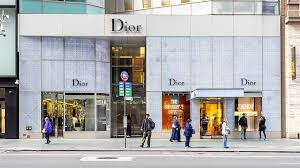Luxury beauty brands are now battling in the realm of high-priced cosmetics.
French luxury brand Chanel recently launched its 31 LE ROUGE lipstick line, featuring casings made of glass and metallic aluminum. The collection includes 12 shades and corresponding refills. In its Chinese name, the term "collectible" is used, reflecting its premium pricing of 1,380 yuan for the original and 620 yuan for the refill.
In comparison, Chanel's classic lipsticks, Velvet Charm and Miss Coco, are priced at 380 yuan each. Even in their newly launched Camellia skincare line, the 50ml serum and cream are priced at 1,380 yuan and 940 yuan respectively. In Chanel's flagship store on Tmall, the highest-priced beauty product goes for 5,580 yuan.
Chanel isn't the only luxury brand recently introducing cosmetics in the thousand-yuan range. Dior's Rouge Premier lipstick retails for 550 euros, roughly translating to 4,297 yuan, three times the price of Chanel's 31 LE ROUGE. Within Dior's Tmall flagship store, the Dior Addict Stellar Shine and Dior Addict Lip Glow are priced at 380 yuan and 370 yuan, respectively.
Historically, luxury brands have used cosmetics as an entry point for consumers. While these products are considered high-end within the beauty industry, individual items are often priced below 500 yuan. Even more advanced skincare lines often offer relatively affordable products based on the category and product line. For instance, cleansers are typically priced around 500 yuan, while many hydrating products hover around 1,000 yuan.
However, a clear trend of price hikes is emerging. Brands aren't just raising prices on existing products; many are setting higher price points when launching new products or their first beauty lines. Hermès' debut lipstick line in 2020 was priced at 760 yuan, while Prada's first and only skincare line had creams and serums exceeding 3,000 yuan.
There was a time when luxury brands believed in the power of entry-level products. Mini handbags priced around 7,000 yuan and logo tote bags in the ten-thousand-yuan range were sales boosters. Coupled with the allure of cosmetics and perfumes, a vast number of middle-class consumers curious about the world of luxury were drawn in, allowing luxury brands to craft cross-class sales success stories.
But as the retail environment and consumer mindset shift, while perfumes, cosmetics, and skincare products remain entry points, luxury brands seem less inclined to use them as stepping stones to upscale consumption. The goal now is to elevate the image of the beauty line, aligning it more closely with higher-priced categories like apparel, handbags, and jewelry.
With cosmetics steadily increasing their share of sales for luxury brands, their strategic importance is now on par with apparel and handbags. Moreover, as societal and cultural perceptions evolve, cosmetics have taken on roles in shaping style and expressing identity. Many luxury brands have established distinct beauty business models.
The challenge, however, is that the colors, effects, and ambiance associated with cosmetics, perfumes, and skincare products are more subjective. Many luxury brands outsource their beauty operations. Just as consumers seek investment-worthy classic handbags, luxury brands need to emphasize their brand value more than ever to convince consumers to choose their products over those from specialized beauty conglomerates.
Maintaining stable prices for regular lines while introducing higher-priced lines is one strategy.
In their descriptions of thousand-yuan cosmetics, luxury brands emphasize how packaging design reflects their brand history, justifying the price hike. For instance, Chanel's 31 LE ROUGE lipstick line claims its design inspiration comes from its Parisian headquarters on Rue Cambon, while Prada suggests its packaging and product concept reflect the brand's intellectual spirit.
However, a high price tag itself is a manifestation of brand image and a marketing strategy. When L'Oréal Group took over Prada's beauty business, it indicated that cosmetics and skincare would move towards a high-end positioning. In this fiercely competitive market where everyone has a story to tell, starting with a high price is the most straightforward and impactful way to showcase brand positioning, though it's not without controversy.
In reality, just as luxury brands initially used cosmetics to attract entry-level consumers, they now use higher-priced product lines to elevate their image, aiming to create an allure of upscale living and entice consumers to purchase their more affordable beauty products.
After all, when a high-end brand offers a lower-priced product, it's seen as a generous discount. But if they were to drastically increase prices directly, they'd risk being labeled as overreaching.






